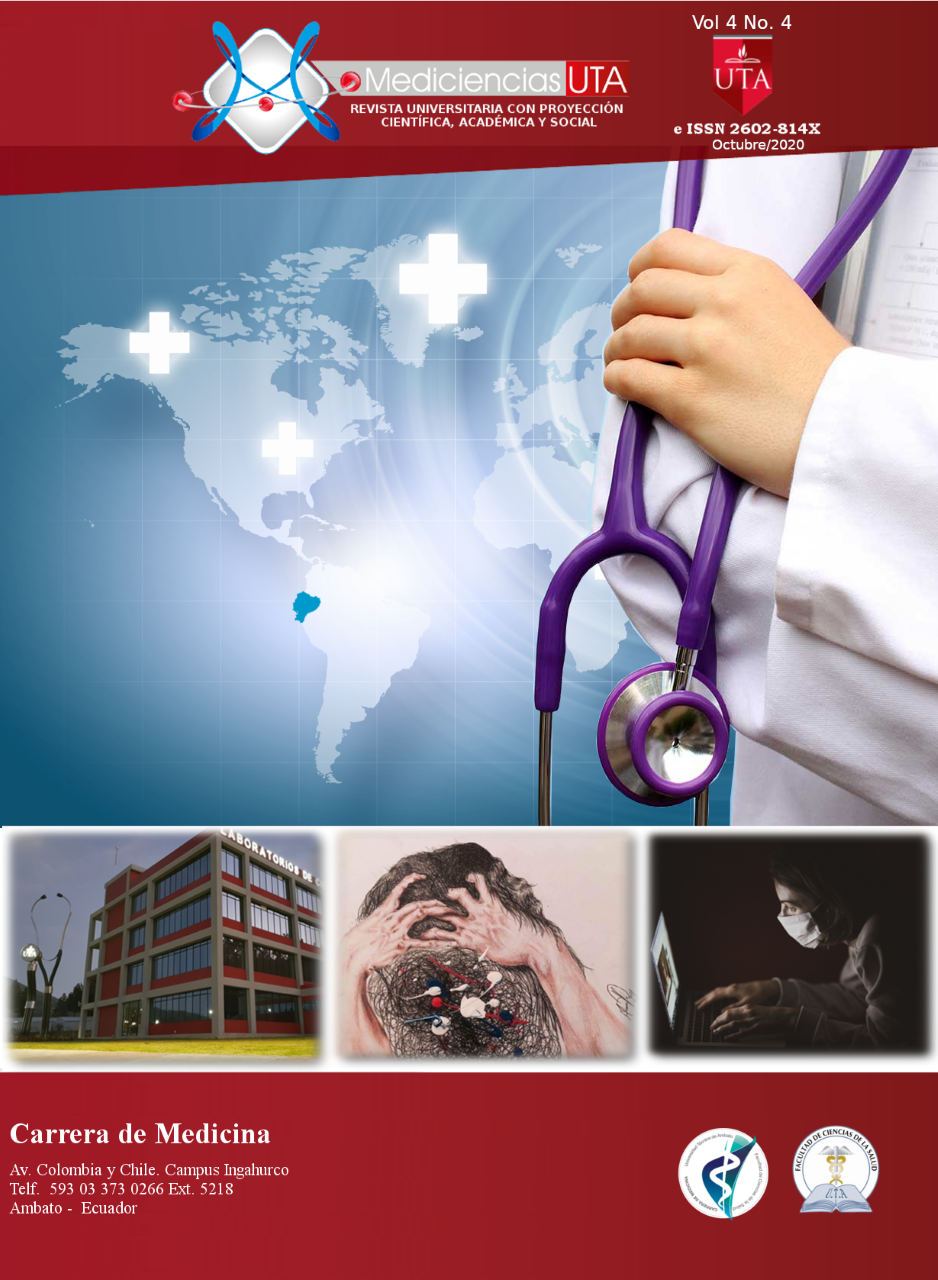Sindrome de Wallenberg en adulto joven
Contenido principal del artículo
Resumen
Introducción: La Enfermedad Cerebrovascular es el conjunto de afecciones clínicas caracterizadas por un
déficit neurológico de inicio súbito secundario a la oclusión total o parcial de una arteria cerebral la misma
que durante los últimos años en países en vías de desarrollo ha provocado un incremento en la mortalidad.
Objetivo: Describir un caso clínico de Síndrome de Wallenberg en un adulto joven, sus manifestaciones
clínicas, diagnóstico y manejo.
Material y métodos: Estudio descriptivo retrospectivo, presentación de caso clínico de Síndrome de
Wallenberg en un adulto joven.
Resultados: Se presenta el caso de un adulto joven que ingresa a hospitalización por presentar cuadro clínico
compatible con Síndrome de Wallenberg de origen cardioembólico (fibrilación auricular paroxística) fuera del
periodo ventana para administración de activador tisular del plasminógeno indicándose cardioversión
farmacológica exitosa, y mostrando mejoría clínica evidente de déficit neurológico al mes de tratamiento
médico domiciliario y rehabilitador.
Conclusiones: La escasa frecuencia de presentación del Síndrome de Wallenberg, así como la necesidad de
realizar un diagnóstico precoz y brindar un tratamiento oportuno para evitar las secuelas neurológicas hacen
que sea importante conocer acerca de su situación actual y manejo.



